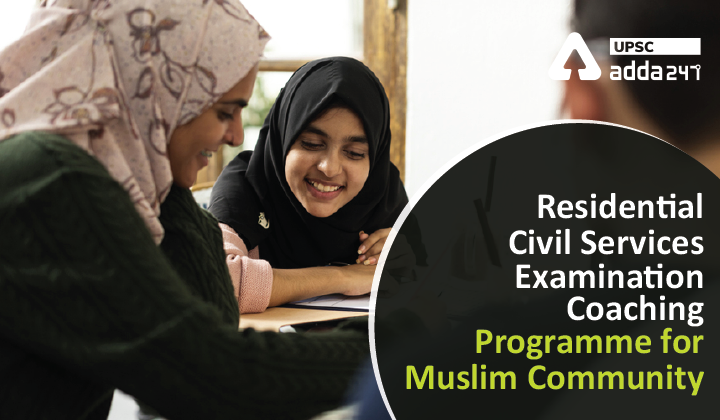Table of Contents
UPSC Academy for Muslim community: Relevance
- GS 2: Welfare schemes for vulnerable sections of the population by the Centre and States and the performance of these schemes.
Residential Civil Services Examination Coaching Programme for Muslim Community: Context
- Recently, Ministry of Minority Affairs has inaugurated Anjuman-I-Islam’s UPSC Academy (AIUPSC), a Residential Coaching Programme for Civil Services and other Govt. Examinations, in Mumbai.
मुस्लिम समुदाय के लिए आवासीय सिविल सेवा परीक्षा कोचिंग कार्यक्रम
Anjuman-I-Islam’s UPSC Academy: Key points
- Meant specially for students and candidates belonging to the Muslim community, the programme has been motivated by the success stories of Muslim students hailing from disadvantaged sections of the society.
- The programme has been set up by the management of Anjuman-I-Islam and is funded by Central Waqf Commission, Ministry of Minority Affairs, Government of India.
- The vision of the coaching centre is to evolve into offering a comprehensive set of programmes, keeping in view emerging trends of other coaching centres established by Haj House, Jamia Millia, AMU and other professional coaching centres across the country.
Schemes for the minorities in India
- Backup to Brilliance policy: Due to this policy, the percentage of minority communities in central government jobs was below 5 percent before 2014, it has now gone up to more than 10 percent.
- Pradhan Mantri Virasat Ka Samvardhan (PM VIKAS) scheme: This is a new scheme that will prove to be a milestone towards socio-economic and educational empowerment of the needy, providing them with employment-oriented skill development.
- Skill development and employment-oriented programs: Programs such as “Hunar Haat”, “Seekho aur Kamao”, “Nai Manzil”, “Nai Roushni”, “Ustad” and “Garib Nawaz Self-Employment Scheme” have provided employment opportunities to more than 20 lakh people from minority community.
- Pradhanmantri Jan Vikas Karykram: The government has expanded this scheme across the country, which was earlier confined to 90 districts with high concentration of minority communities.
Read current affairs for UPSC




 TSPSC Group 1 Question Paper 2024, Downl...
TSPSC Group 1 Question Paper 2024, Downl...
 TSPSC Group 1 Answer key 2024 Out, Downl...
TSPSC Group 1 Answer key 2024 Out, Downl...
 UPSC Prelims 2024 Question Paper, Downlo...
UPSC Prelims 2024 Question Paper, Downlo...





